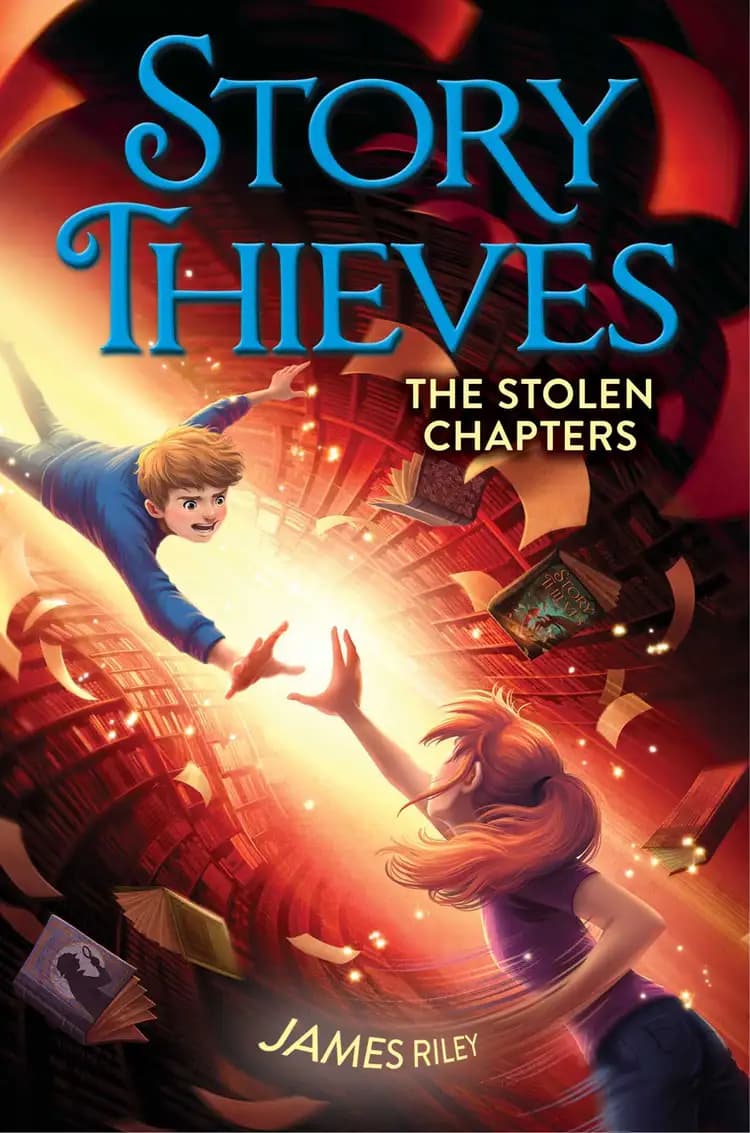The Stolen Chapters
#2 in The Story Thieves Series
on Goodreads (4,039)
What’s inside...
Owen, Kiel, and Bethany confront secrets, stolen memories, and some very familiar faces in the follow-up to The Story Thieves—from the bestselling author of the Half Upon a Time trilogy. Owen Conners would never jump into a mystery. There are too many hidden clues, twists that make no sense, and an ending you never see coming. Mysteries are just not Owen’s thing. So how exactly did he end up in one with his memory erased? And that’s far from the only question. How did Kiel Gnomenfoot, boy magician, lose all of his magic? Where’s Bethany, their half-fictional friend? And who’s the annoying guy wearing the question mark mask and Sherlock Holmes hat, taunting Owen and Kiel that Bethany is in grave danger? Bethany is trapped in a hidden room that’s slowly filling with water, and she can’t escape until her friends find her. But is she imprisoned by more than just chains and a locked door? What’s she hiding from Owen and Kiel? Maybe some mysteries just shouldn’t be solved.
Character compass
Owen Conners
Bethany
Kiel Gnomenfoot
Discussion points
What would you do if you found yourself in a story where the chapters are missing, like Owen and Bethany?
How do you think the missing chapters affect the story? What might change in the book if they were still there?
Can you think of a time when you had to solve a big problem like Owen and Bethany? What did you do?
Why do you think honesty is important in friendships, as shown between Owen and Bethany?
If you could write your own chapter in the book, what would it be about?
Tip: Role play these questions
Encourage your child to imagine themselves in the story, asking how they would feel and react in similar situations.
Discuss the importance of teamwork and problem solving, drawing parallels to real-life scenarios.
Use the book’s theme of 'missing pieces' to talk about overcoming incomplete information and making the best decisions with what you have.
Highlight the characters’ development throughout the book, asking your child how they think the characters have grown or learned from their experiences.
Key lessons
Example Lesson: The importance of teamwork
Explanation: In 'The Stolen Chapters', the characters must collaborate to solve mysteries and overcome challenges, highlighting the power of working together.
Real-World Application: Children can apply this lesson by engaging in group activities at school or during play, learning to cooperate and value each other's input.
Example Lesson: The value of perseverance
Explanation: Throughout the book, characters face setbacks yet continue to push forward, demonstrating resilience and determination.
Real-World Application: This teaches children to not give up easily in the face of difficulties, whether it be in completing a difficult homework assignment or mastering a new skill.
Example Lesson: Responsibility for one's actions
Explanation: Characters in the story learn to take responsibility for their actions, especially when those actions lead to unexpected consequences.
Real-World Application: Children learn the importance of owning up to their mistakes and understanding how their actions affect others, fostering accountability and integrity.
Example Lesson: Critical thinking
Explanation: The plot involves solving a series of puzzles, requiring characters to think critically and analytically.
Real-World Application: Encourages children to approach problems thoughtfully and explore different solutions, which is beneficial in academic and personal situations.
Example Lesson: The joy of reading
Explanation: As characters leap through books to solve mysteries, the narrative celebrates the adventure and joy found within stories.
Real-World Application: This can inspire children to discover the pleasures of reading and exploring new worlds through literature.
